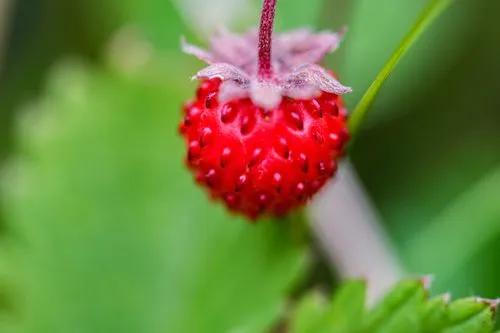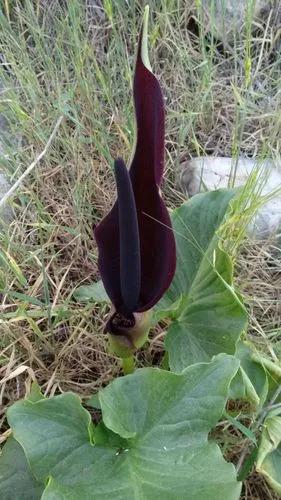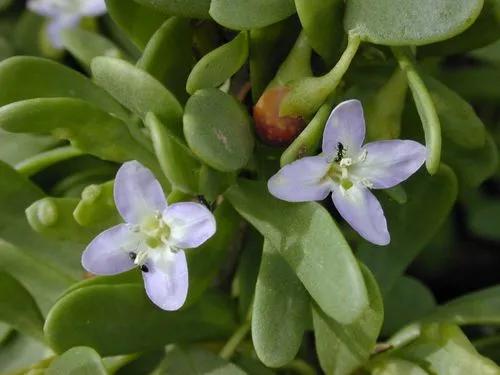Cymbidium sinense is species of the orchid genus Cymbidium. This noble flower is also known as The Chinese Cymbidium, Cymbidium chinense, and Cymbidium fragrans. It was first described in 1805 by German botanist Carl Ludwig Willdenow.
Cymbidium sinense Care
Cymbidium sinense



Cymbidium sinense is native to China, Japan, Hainan, Myanmar, Taiwan, Vietnam, Thailand, and the eastern Himalayas. This plant grows in forests. It prefers wet, shaded spots by river banks at about 900-6500ft (300-2000m) above the sea level.
This small terrestrial orchid has egg-shaped pseudobulbs and leaves that are 1-1.5 in (2-3 cm) wide and about 1.5-3 ft (45-100 cm) long. There can also be dwarf varieties of Chinese cymbidiums that are 2 or 3 times smaller than regular ones. During the blooming period, Cymbidium sinense produces strong-scented brownish-purple flowers.
How to Care for the Plant

Water

Water Cymbidium sinense thoroughly during the period of active growth. Keep an eye on the drainage – the soil shouldn't keep stagnant water. Water more often in periods of dry heat and reduce watering in cold weather. Cymbidium sinense prefers 40-60% humidity levels, especially during the blooming time.

Pruning

These orchids do not need pruning. Cut off the stems after your plant has done blooming and pick off wilted blossoms.

Fertilizer

During active growth, from September through to mid-December, apply a fertilizer high in nitrogen to stimulate growth. When winter comes, start using a fertilizer high in phosphorous and potash to encourage future blooming. It will be best to use quarter recommended strength every week. Also, feed the plant after watering so the roots don't burn. Rinse the pot couple of times a month – so the minerals will not build upon the walls of the pot.

Sunlight

Cymbidium sinensis needs about 50% shading in the warm period, especially during growth. During the regular growth time, keep the shade at about 30%. The shading should be about 15-20% when the plant is blooming. In winter, Cymbidium sinensis can stand the bright indirect sun. If there is too light for the plant, its leaves will become bleach-white. If it is too dark, the orchid will not bloom, and the leaves will turn dark green.

Soil

Use a loose, well-drying substrate that allows the water to drain quickly. You may want to choose granulation bark in the bottom half of the pot and cover it with fine bark adding about 10% perlite and 10% charcoal. Also, you can add a small amount of chopped sphagnum moss, sand, and fibrous clay to your mix.

Propagation

Repot Cymbidium sinensis only if you notice the pot is becoming overcrowded. Don't do this more often than once in 3-4 years. Wait until the blooming is ended. Remove all the dead roots and air the root ball before repotting in the new soil.
Propagate your Chinese cymbidium in spring after blooming. Take a natural division that includes 3-5 bulb groupings. If you can remove the bulbs without ruining the division, do so and place them in an individual pot filled with the soil you use for mature plants. The new plant will bloom in a couple of years.

Temperature

The Chinese Cymbidium will feel great if the day temperature is about 64-75˚F (18-24°C) and the night temperature is 44-55˚F(7-13°C). These orchids can tolerate frost in the wild, so 21-26˚F (-3-6˚C) won't be a problem for them. If you live in a region where winters are really severe, move your Cymbidium sinensis indoors at the end of fall or build a heated greenhouse for them.

Container

Chinese cymbidium, like its relatives Cymbidium ensifolium and Cymbidium goeringii, has massive, long, straight roots. That's why your noble orchid will need a specific narrow, tall pot (12-15 in/25-30 cm) with good drainage.

Fun fact

In China, they call Cymbidium sinense 'The New Year's Orchid' because it usually flowers during the Chinese New Year.

Popularity

20 people already have this plant 5 people have added this plant to their wishlists
Discover more plants with the list below
Popular articles






